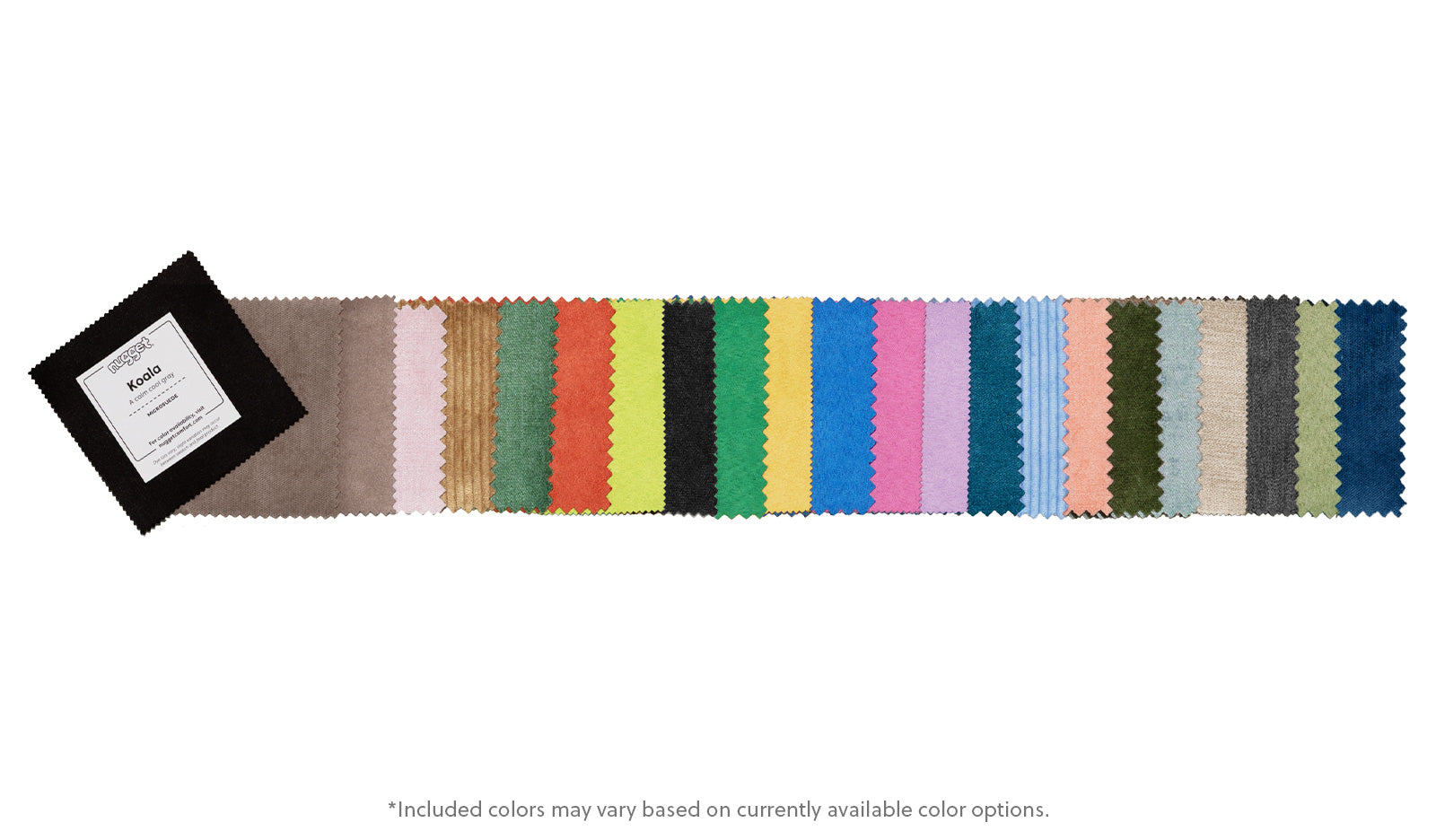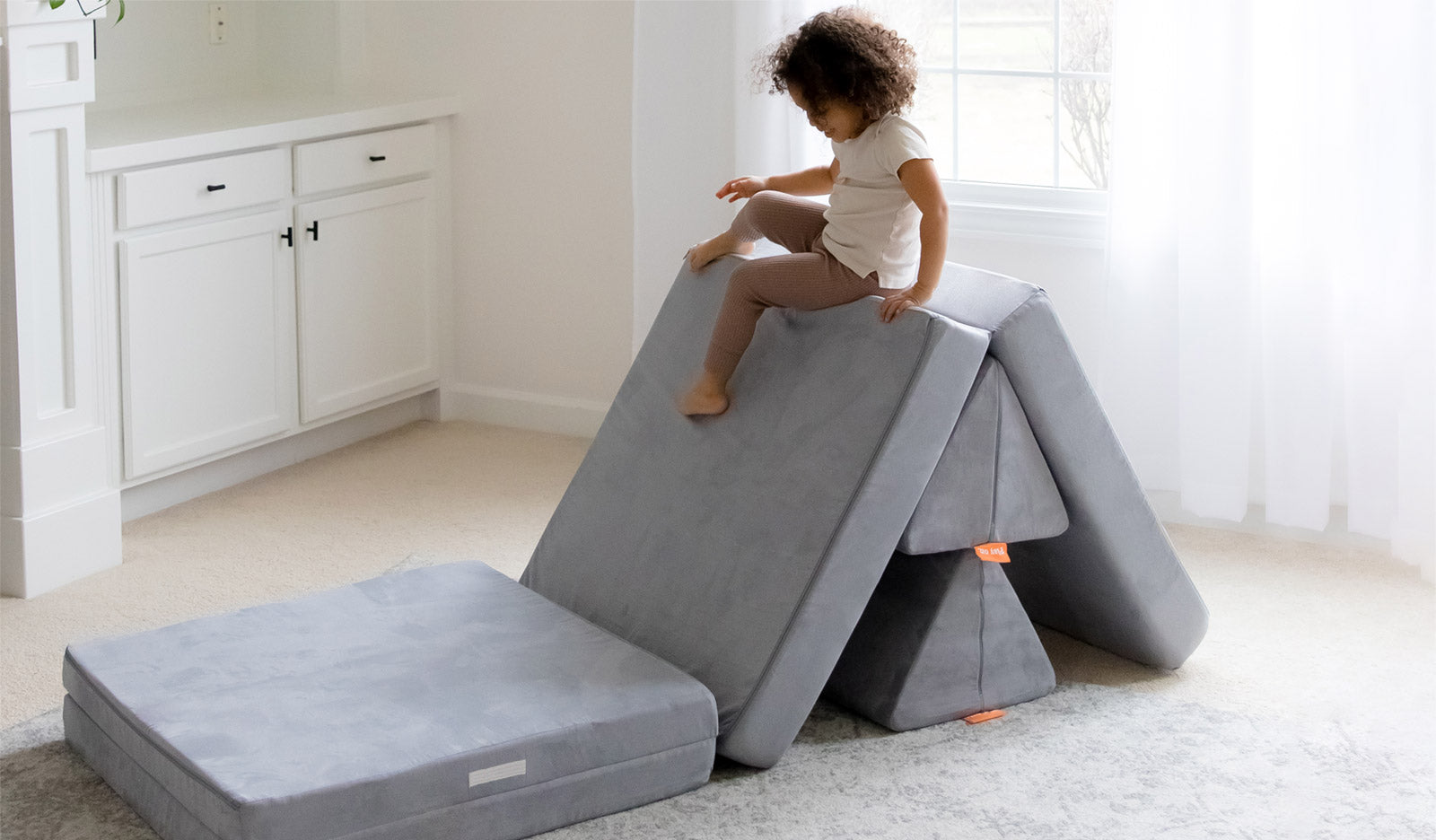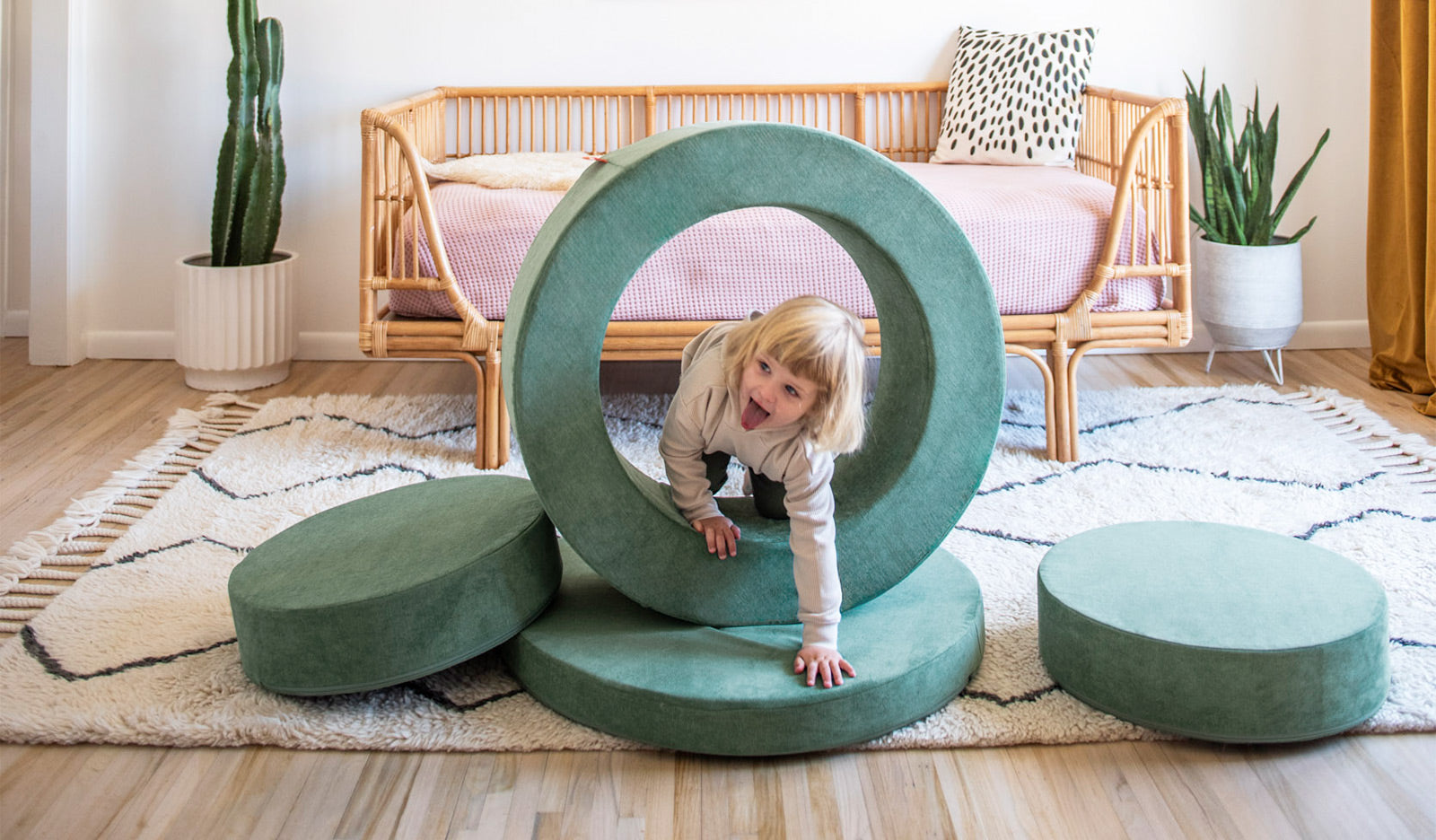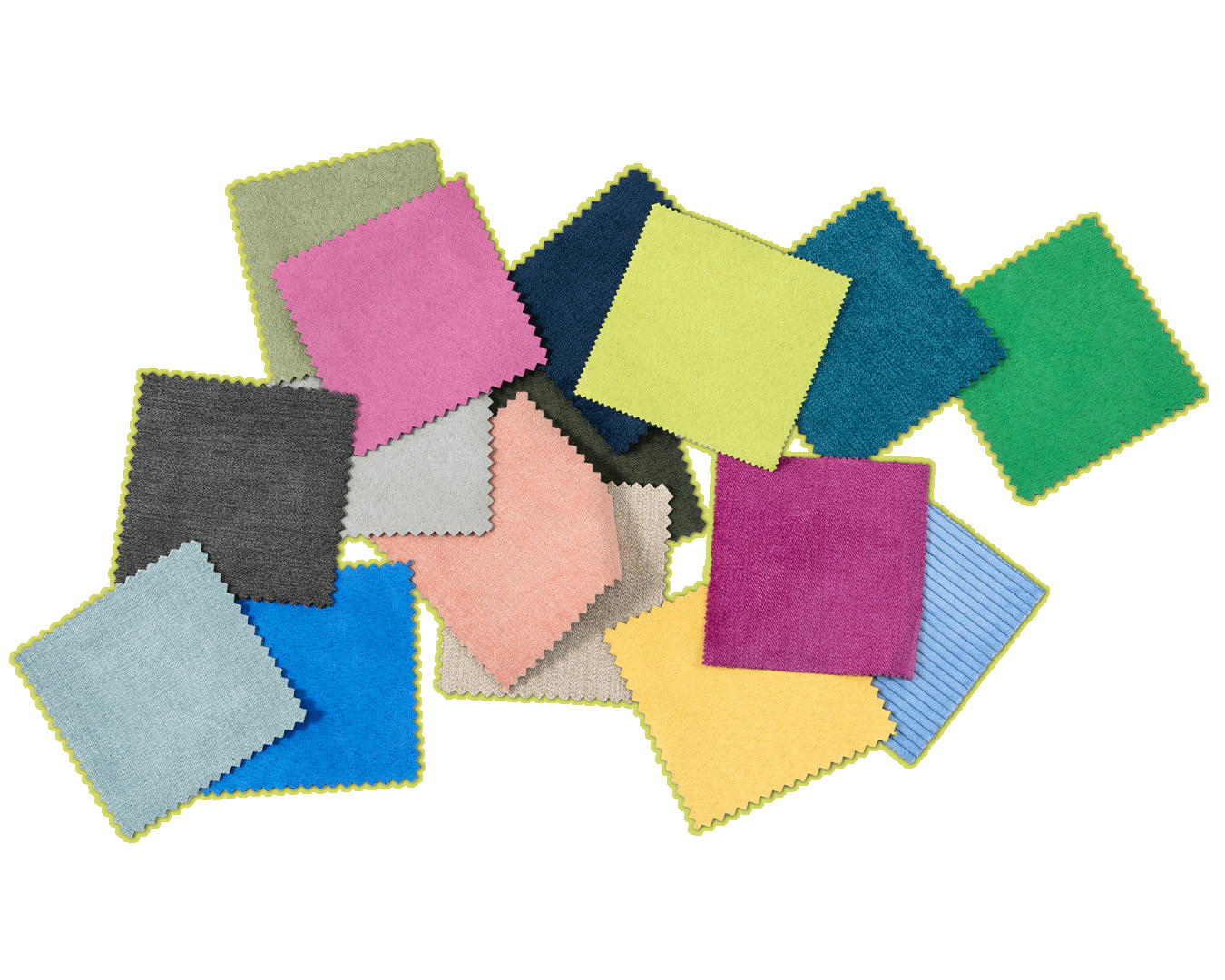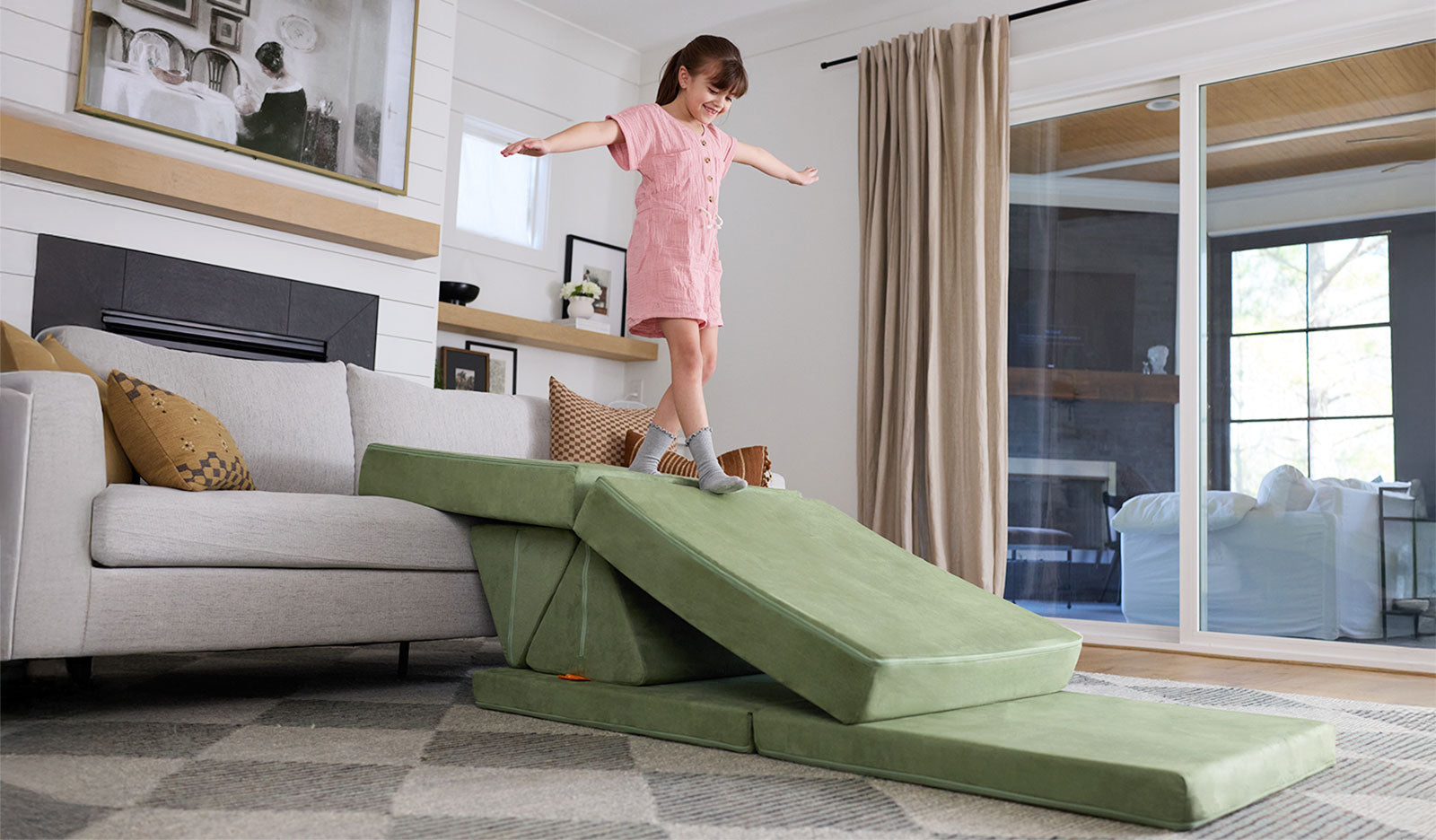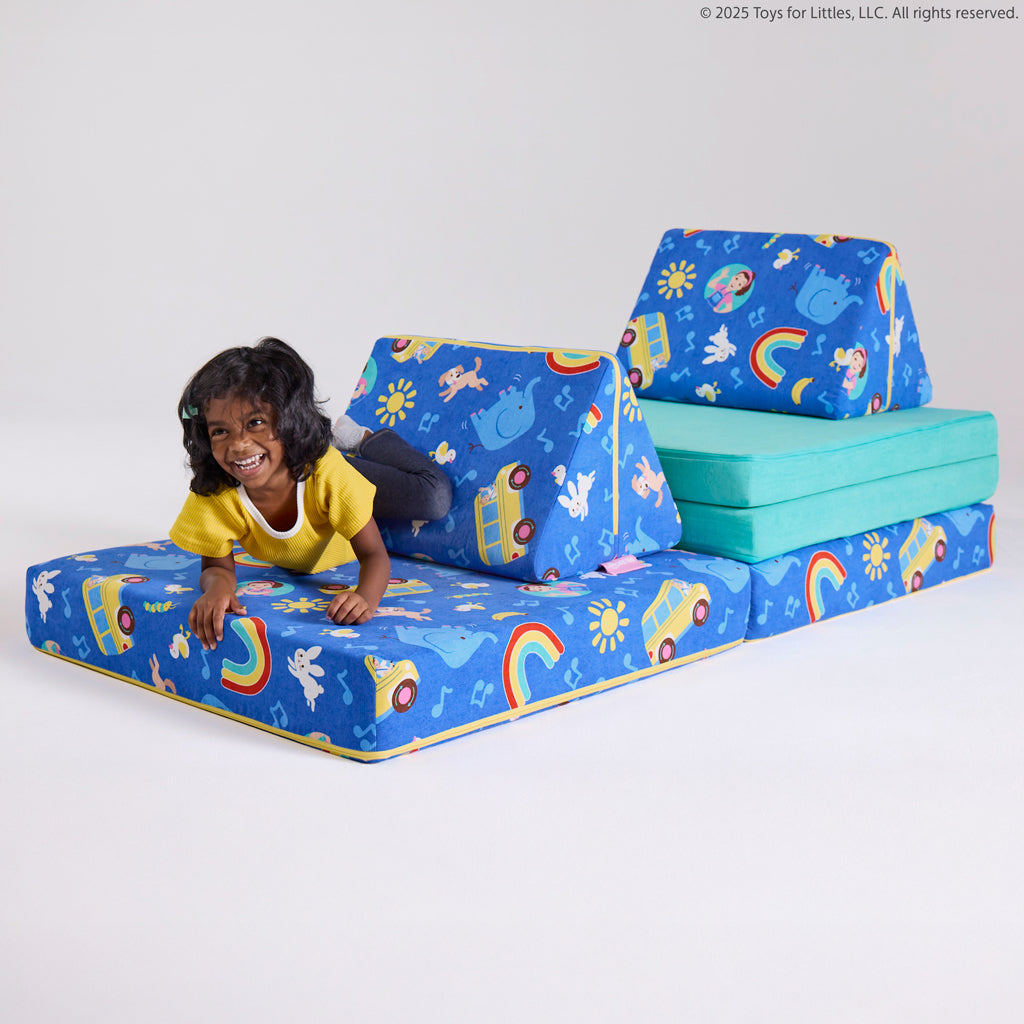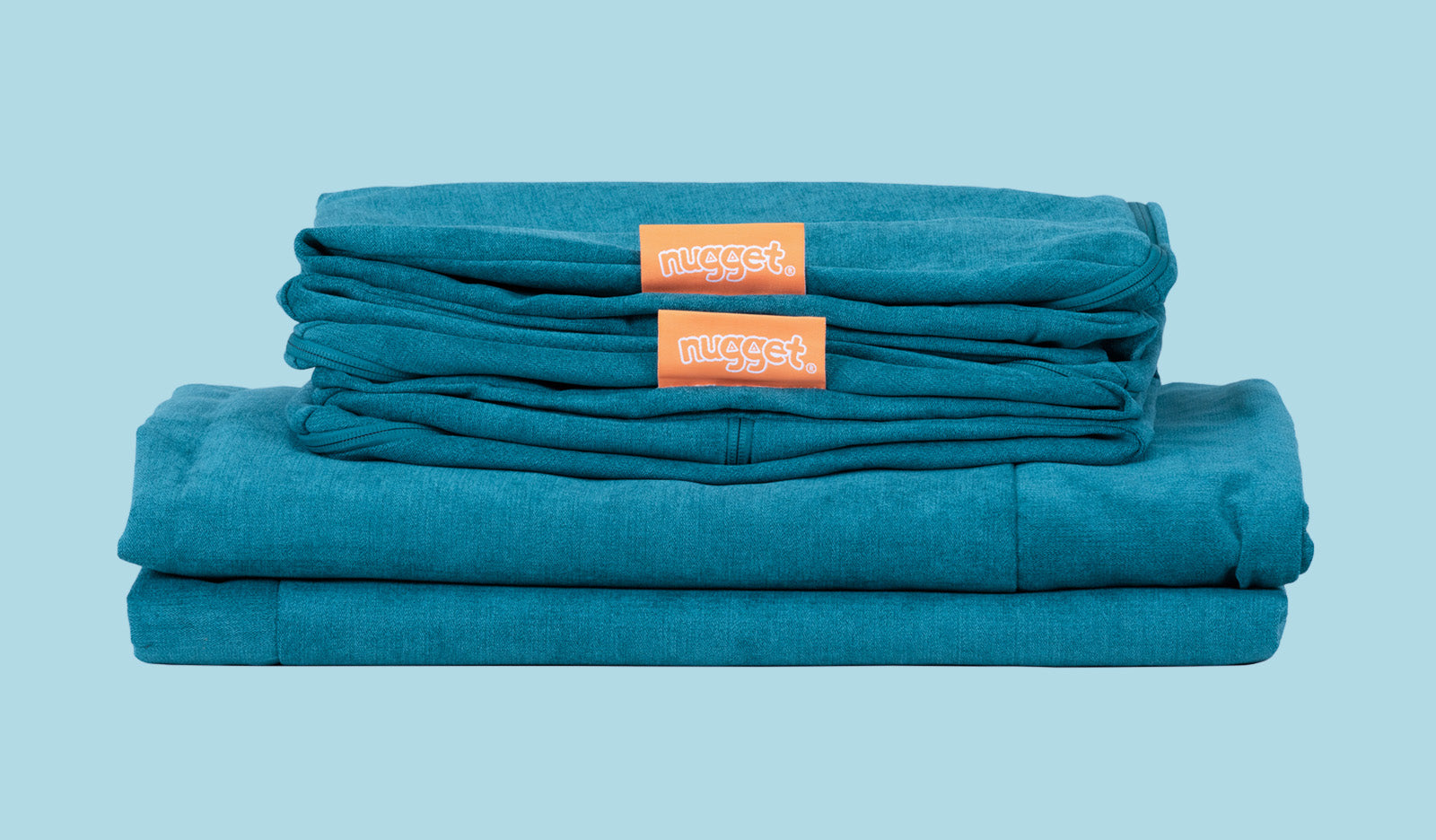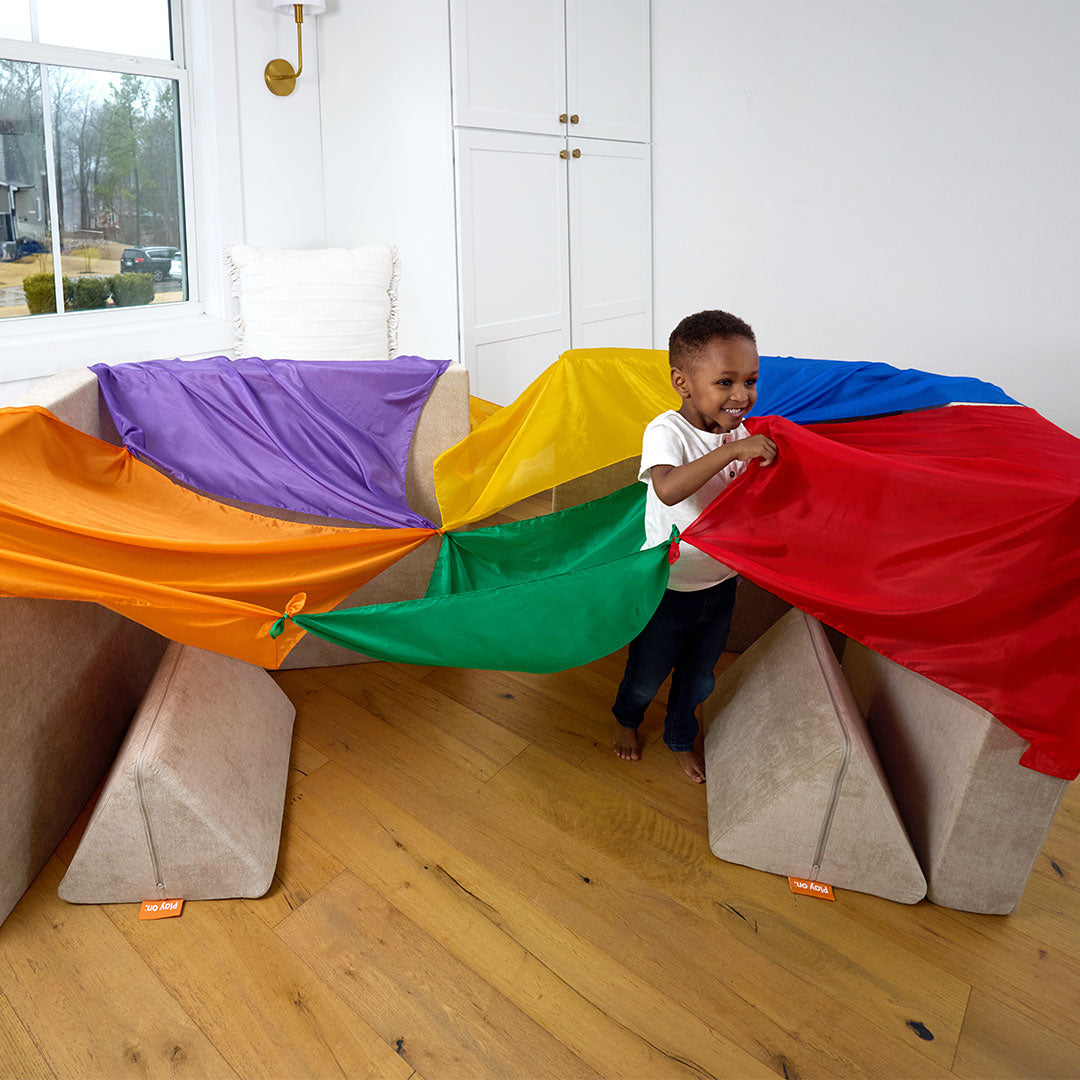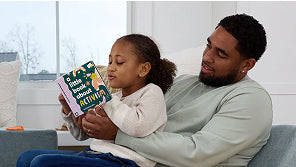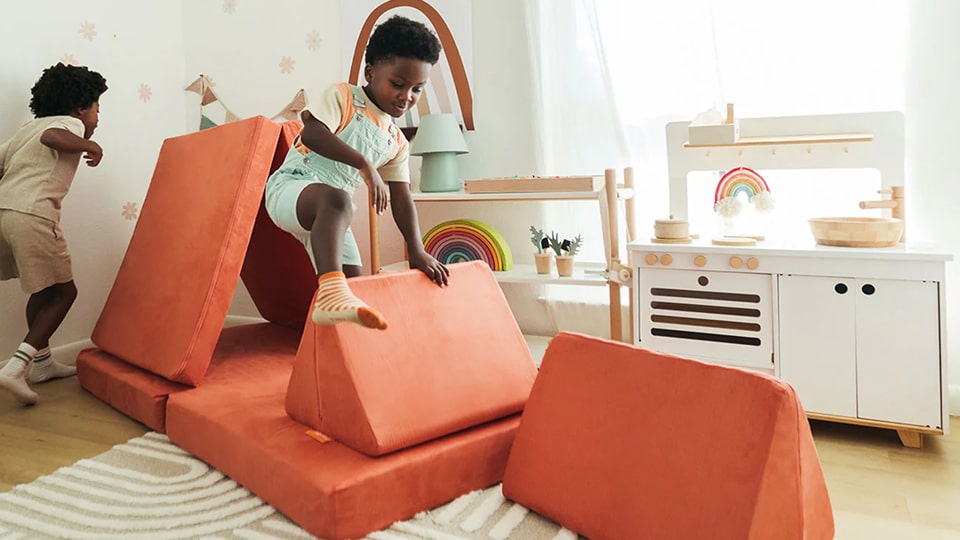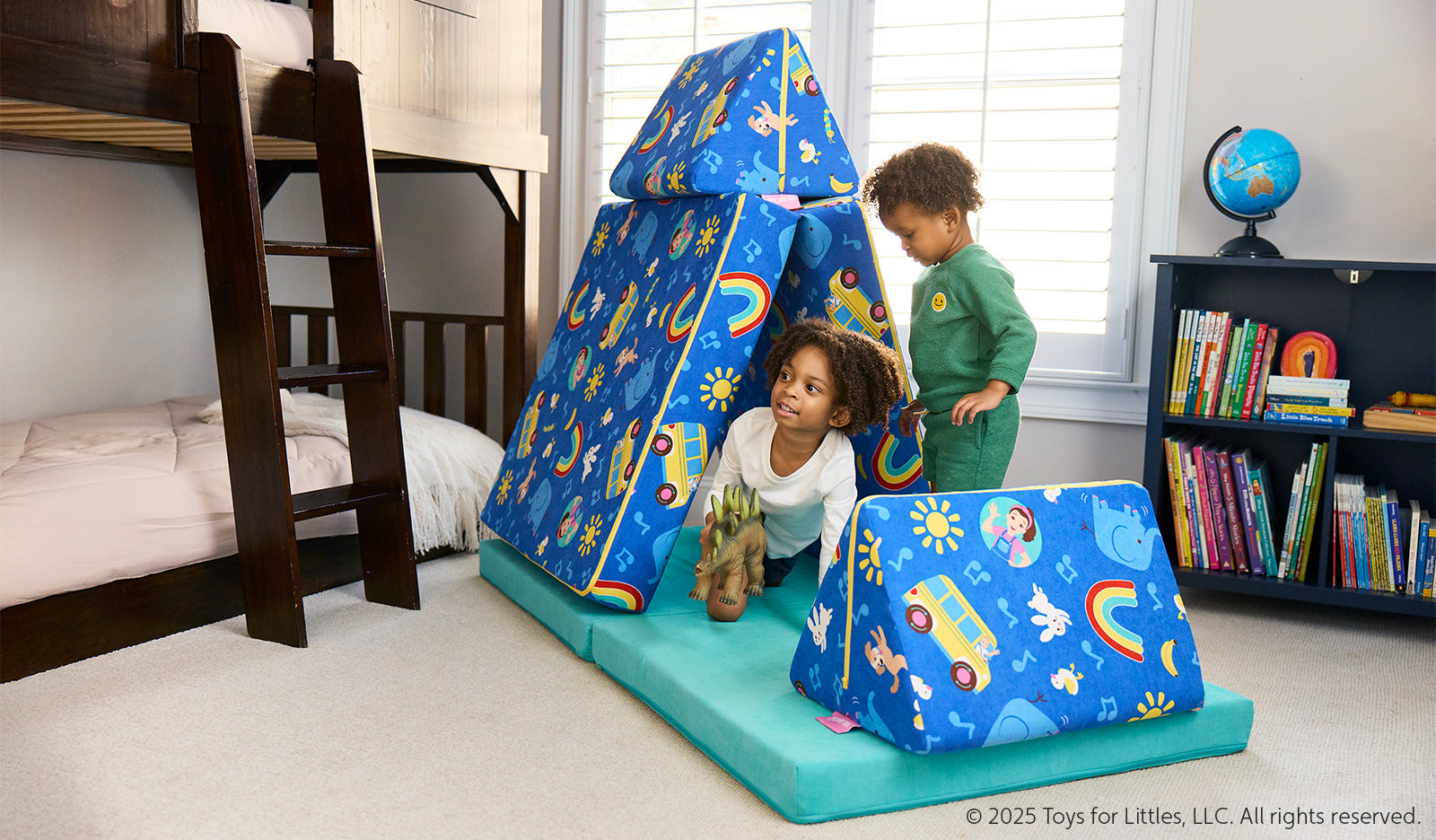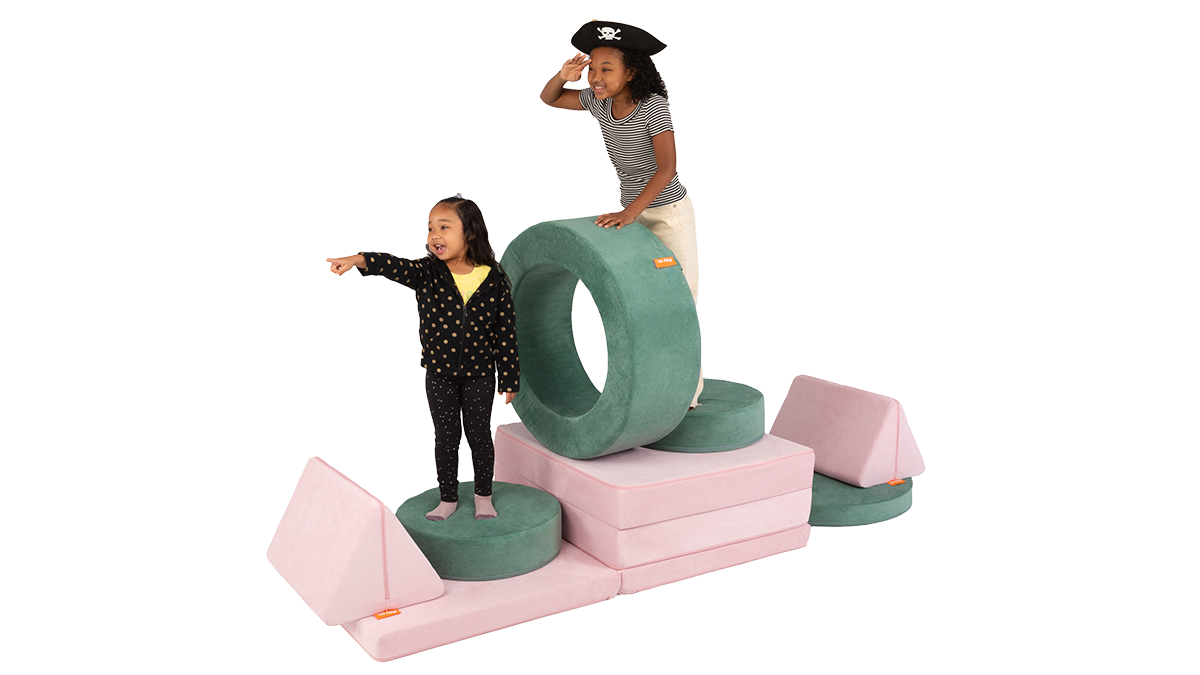The Importance of Risky Play

Nugget Content Manager Allie sat down with TikTok star and parent educator, Mr. Chazz, to discuss his “See, Guide, Trust” approach to caregiving. With his background in Montessori education and passion for social change, Mr. Chazz is uniquely positioned to provide tangible advice for parents of young children. Read on to learn more about his work, his philosophy on risky play, and why he loves the Nugget so much!
[Allie] How did you get into this work?
[Mr. Chazz]: I first started working in a Montessori classroom with 30 children. I really connected with the children in terms of understanding them and playing with them, but I didn’t know what to do with conflict resolution and emotions. In certain situations, I wondered if I was actually making those moments worse, and that was hard and stressful.
Over time, through leaders who believed in me and sent me to training constantly, through reading, podcasts, and daily reflections, I grew as a teacher and established a reputation for connecting with the “challenging” kids. Other teachers started asking me for advice, and they’d come back the next day with a “Wow, that changed the entire day, great advice!”  I knew I could keep teaching and making an impact on my kids – but if I worked with teachers, my impact would be exponential. I became an educational specialist for eight different schools and my job was teaching inside and outside the classroom. When the pandemic hit and teachers were sent home, parents became the everything for kids. Through social media and in real life, I saw the challenges that parents were having and I felt like I had some insight into how to help. That’s when I started creating TikTok videos, ones where by the end of it, you have a new tool in your tool belt. I started posting on Instagram and Facebook, and now I have a podcast for longer form conversations, and I offer one-on-one coaching as well.
I knew I could keep teaching and making an impact on my kids – but if I worked with teachers, my impact would be exponential. I became an educational specialist for eight different schools and my job was teaching inside and outside the classroom. When the pandemic hit and teachers were sent home, parents became the everything for kids. Through social media and in real life, I saw the challenges that parents were having and I felt like I had some insight into how to help. That’s when I started creating TikTok videos, ones where by the end of it, you have a new tool in your tool belt. I started posting on Instagram and Facebook, and now I have a podcast for longer form conversations, and I offer one-on-one coaching as well.
As someone who follows you on my own personal Instagram page, I know how helpful your advice is! What is your primary goal with your work?
My big vision for the world is to move towards world peace. I know, it’s a huge vision! I aim to do that by helping adults see, guide, and trust children. You’ll probably notice in my work, a lot of it is aimed at helping adults understand and see, truly see, children. It is my belief that addressing underlying needs – empathetically building relationships with others, seeing the best in people, being able to identify one's own needs in a healthy way – has to be the foundation of any kind of world peace. 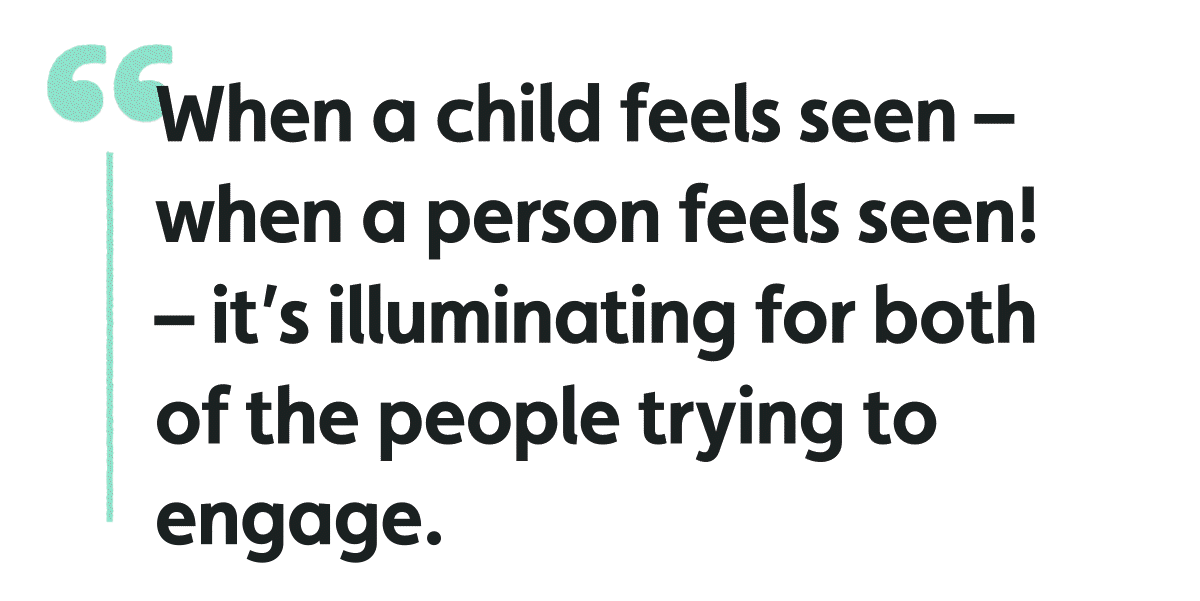
Can you elaborate on your approach of “See, guide, trust”?
A lot of times, traditionally, we’ve been trying to help children along without even seeing them and understanding them. “Oh, they do this behavior and you do this response…” but we’re not seeing the child for what they are experiencing. When a child feels seen – when a person feels seen! – it’s illuminating for both of the people trying to engage. It also helps the caregiver learn what to do and how to guide the child.
The trust piece is so important as caregivers. So much of what we do is out of fear, and that creates an unhealthy pattern of behavior. With trust, you can see your child as a person who is using all of their resources to the best of their ability. They are trying their best to meet their needs in this uncertain, new world that they find themselves in, and caregivers can then see their behavior through positive intent instead of seeing the worst in their behavior.
Would you define your approach as “gentle parenting”? A different term?
Each of the approaches and philosophies have a lot in common; different philosophies may focus on different things. If I had to choose one where I lean, it would be the conscious side of things. All of these common approaches – gentle, respectful, peaceful – start with our own awareness. You can do the things and say the script but it all starts with the awareness of the caregiver, of the adult.
I talk a lot about breaking generational cycles and that’s where a lot of unconscious stuff comes up, these unhealthy patterns of behavior that come up from a previous generation. That’s where most parents and teachers, nannies and caregivers, struggle with even embarking on the journey. Awareness is so important!
How can caregivers support exploratory play while setting and keeping safety boundaries?
 First, set expectations as much as possible. Let’s say your kid wants to jump and climb on the Nugget. First, you set expectations for how they interact with the Nugget, and keep those consistent. Then, offer two positive choices and a boundary: You can build with the Nugget, you can jump on the Nugget, you may not flip off the Nugget. If they struggle with the boundary, it’s ok to have a logical consequence, and there may be natural consequences along the way.
First, set expectations as much as possible. Let’s say your kid wants to jump and climb on the Nugget. First, you set expectations for how they interact with the Nugget, and keep those consistent. Then, offer two positive choices and a boundary: You can build with the Nugget, you can jump on the Nugget, you may not flip off the Nugget. If they struggle with the boundary, it’s ok to have a logical consequence, and there may be natural consequences along the way.
What is the difference between a natural consequence and a logical consequence?
Natural consequence is a consequence that happens without the intervention of a caregiver. You’re running and bump your toe and it hurts. You’re mean to your friend and they don’t want to play with you.
Logical consequences are related and proportionate to what is happening. The moment to use one is when they are having a hard time with a boundary. In the example from before, you could say “If you continue to flip off the Nugget, then it will be time to get off the Nugget and try again later.” It’s not that the child is banned from the Nugget or I’m getting rid of it, nothing like that. You can just say “It looks like you’re having a hard time with this boundary. Let’s try again later.”
A punishment (which I wouldn’t recommend) is meant to inflict a negative feeling or suffering to get some kind of result. For example: “You didn’t listen to me when I told you to build with the Nugget instead of flip and so no more TV time!” It’s unrelated, it’s just meant to really make the child feel bad with the thought process that they won’t do the thing the next time. Punishments aren’t an effective way to work through emotions.
And in this instance where enforcing the boundaries brings out some big feelings, how do you respond to the child?
Ok, so you’ve set two positive choices and a boundary. There is a necessary, logical consequence. Now the child is upset because you’ve enforced the boundary. You could respond with something like: “You’re having a hard time with this and we’ll try again later. That’s hard for you, I know you really want to keep playing. You’re upset by stopping. I hear you, and we’ll try again later.” 
Do you have any advice for parents trying to navigate risky play, especially for super active kids?
Any time we talk about risky play, I get questions about hazardous play. That’s a situation where the child will be seriously hurt and you want to either get rid of the hazard or remove them from the hazardous situation. With risky play, it’s about exploration of the physical space in a developmentally appropriate way.
 Children generally know everything they need to do to grow and thrive – climb, run, jump – but they need help knowing where. A two-year-old intuitively knows that they need to climb for their own social, emotional, gross motor development. They have some internal compass that drives them to do it. But they don’t necessarily know that they can climb on this versus this; they find themselves in an environment we’ve created for them with these internal needs that need to be expressed.
Children generally know everything they need to do to grow and thrive – climb, run, jump – but they need help knowing where. A two-year-old intuitively knows that they need to climb for their own social, emotional, gross motor development. They have some internal compass that drives them to do it. But they don’t necessarily know that they can climb on this versus this; they find themselves in an environment we’ve created for them with these internal needs that need to be expressed.
What we can do is help them identify what the need is – climb – and help them meet that need in a healthy way. “Ah I see you want to climb, you have a lot of energy in your body, let’s climb on the Nugget or couch instead.” That’s why I love the Nugget so much! It allows for more opportunities for risky play because it’s soft and maneuverable, great for creating a safe environment for exploration.
For kids with a lot of energy, it can be helpful to identify what to do rather than what not to do. The flaw in asking a kid to stop running or jumping is that their bodies are still screaming at them to move, to jump, to climb! The level two of the previous example is seeing the underlying need: “I see you want to jump, you have a lot of energy” and then helping them meet that need in an appropriate way. “Let’s jump from one Nugget cushion to the other.” Really, I love how the Nugget provides such opportunities for children and such relief for the parents.
I struggle between wanting to support risky play and feeling like “Be careful” has to be one of my top five phrases. Any advice?
In moments where your child is exploring their boundaries, if you can say nothing, that is a great way to support risky play. 98% of the times when you want to say “be careful” you could probably say nothing! If there’s a safety thing where your child doesn’t notice and you do, just notice. “Looks like that cushion is on the edge!” Within reason, allowing kids to explore natural consequences is important.
What are some of the benefits to providing risky play opportunities?
One, you have to think about how they are learning about their bodies and their limits. It’s important for them to learn and test and figure things out, especially because you have to think about how rapidly they are growing. Maybe they can do something different today than what they did yesterday! And they want to test it out.
And with that comes emotions: I’m scared here, or I’m unsure what is going to happen here. Will I be able to climb all the way to the top? And once I do, it might be scary but I might be happy because I wanted to do it! It’s about learning to navigate those feelings.  I like to relate it to how adults do risky play. For adults, this looks like situations where we might succeed or we might be hurt. It’s important for us to be able to do that. Speaking up at that meeting... that’s risk. Advocating as a teacher for what you believe in the classroom, asking for that promotion, asking someone to dance, starting a business – these are all times that we as adults recognize the importance of taking that risk. That ability is something that we would want for our children and that you want for yourself. Children tend to be better at this than adults, and sometimes, because we’re so risk averse as adults, we try to scare that out of them because of our own fears. Caregivers: allowing your child to do risky play is risky play sometimes!
I like to relate it to how adults do risky play. For adults, this looks like situations where we might succeed or we might be hurt. It’s important for us to be able to do that. Speaking up at that meeting... that’s risk. Advocating as a teacher for what you believe in the classroom, asking for that promotion, asking someone to dance, starting a business – these are all times that we as adults recognize the importance of taking that risk. That ability is something that we would want for our children and that you want for yourself. Children tend to be better at this than adults, and sometimes, because we’re so risk averse as adults, we try to scare that out of them because of our own fears. Caregivers: allowing your child to do risky play is risky play sometimes!
I love that idea! Do you have any other advice for parents?
One thing that I want all parents and teachers to know: it’s not about being a perfectionist, the goal is to be an improvenist. Perfectionism slows the growth, while improvement increases the growth.

Many thanks to Mr. Chazz for chatting with us and sharing your expertise! You can catch him on TikTok, Instagram, Patreon, and via his podcast.
